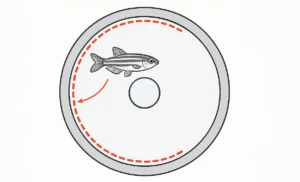
ANY-maze has been a staple of behavioral tracking for years—helping labs automate simple video tracking for rodents across various mazes. However, as scientific demands evolve, researchers increasingly seek higher frame rates, markerless tracking, multi-animal tracking, and AI-driven precision to uncover deeper behavioral insights.
Today’s behavioral neuroscience labs need more than just zone entry data—they need real-time posture analysis, multi-species support, and batch processing power.
In this article, we’ll review the top alternatives to ANY-maze in 2025, with a focus on scalability, speed, flexibility, and next-gen technology.
The Most Advanced and User-Friendly Behavioral Tracking Solution
Why it’s #1: ConductVision redefines what’s possible in automated behavioral tracking:
Best for: Labs ready to upgrade to AI-powered, scalable tracking without sacrificing ease of use.
Reliable but Becoming Outpaced by New Technologies
Strengths:
Limitations:
Difficult to scale for high-throughput or multi-species studies
Powerful, but High Complexity and Cost
Strengths:
Limitations:
Best for: Larger, well-funded labs needing extensive modular control.
Powerful Open-Source Pose Estimation with High Barriers to Entry
Strengths:
Limitations:
Best for: Computational neuroscience labs with machine learning expertise.
A Free, Lightweight Tool for Simple Locomotion Analysis
Strengths:
Limitations:
Best for: Labs on a tight budget or students starting basic behavior projects.

If you’re seeking the next generation of behavioral tracking, ConductVision delivers a rare combination of precision, versatility, and simplicity. With high-speed tracking, true markerless AI detection, and support for multiple species, it surpasses legacy systems like ANY-maze while remaining easy enough for any lab to adopt.
Ready to transform your behavioral research?
Learn more about ConductVision today
References:
Rodriguez, A. et al. (2018). ToxTrac. Scientific Reports.
Built for scientists. Trusted by researchers. Powered by Conduct Science.

Monday – Friday
9 AM – 5 PM EST
DISCLAIMER: ConductScience and affiliate products are NOT designed for human consumption, testing, or clinical utilization. They are designed for pre-clinical utilization only. Customers purchasing apparatus for the purposes of scientific research or veterinary care affirm adherence to applicable regulatory bodies for the country in which their research or care is conducted.